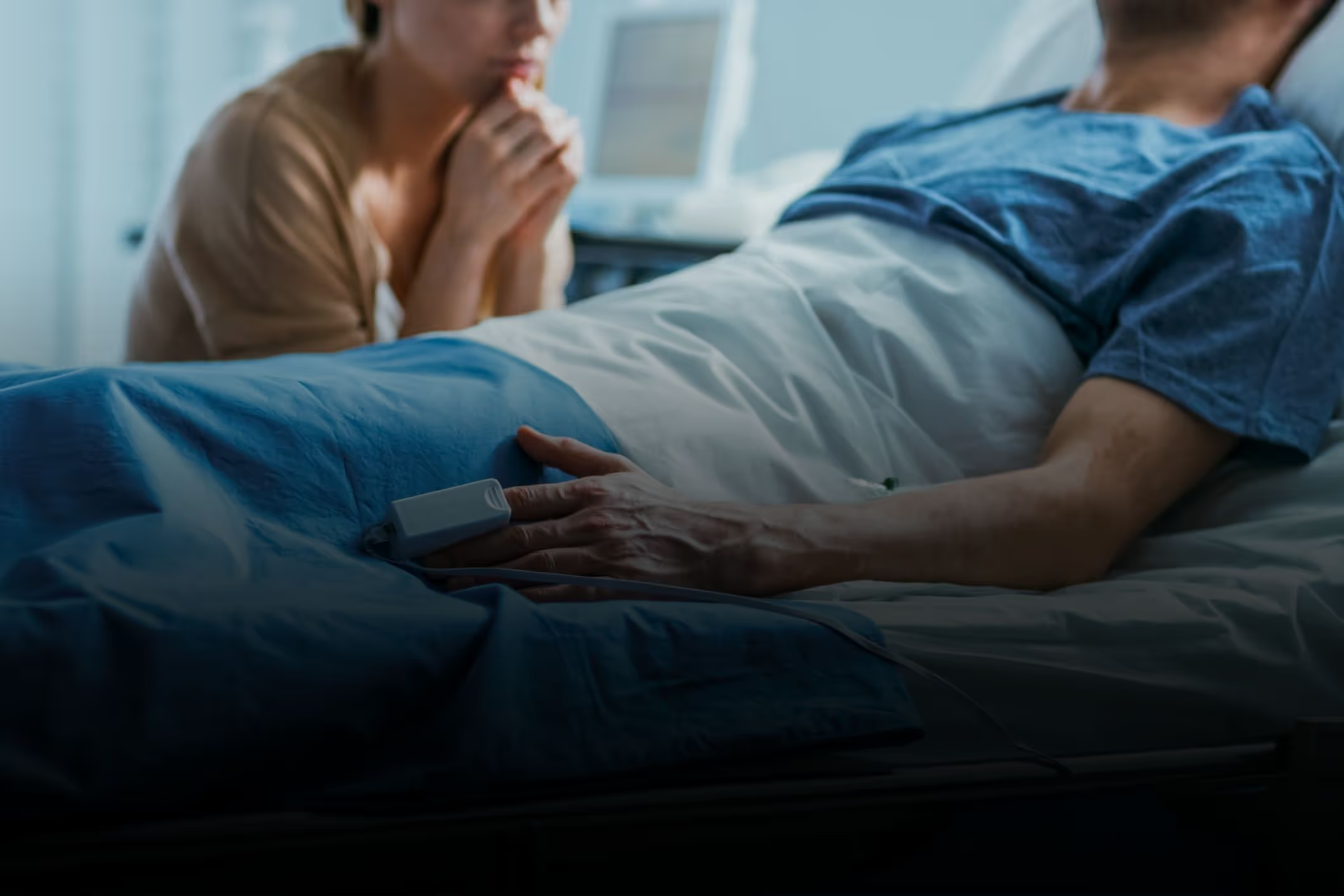Disorders of consciousness are serious medical conditions where a person’s awareness and ability to stay awake are severely impaired. People suffering from these disorders are alive, but tragically unable to respond to the world around them.
When a loved one suffers from a disorder of consciousness, it can feel like they are a shadow of the person they used to be. Families struggle with the frustration and heartache of seeing someone they care about unable to speak, move, or even open their eyes. On top of that, they face difficult medical decisions and heavy financial burdens.
At the Brain Injury Law Center, we’re here to help you make sense of traumatic brain injuries and their consequences. We’ll explain the different levels of disorders of consciousness and discuss how to take legal action if your loved one’s injury resulted from someone else’s negligence.
Our team understands the human cost of these injuries. If your loved one’s condition was caused by someone else’s negligence, reach out to our traumatic brain injury lawyers today online or by calling (757) 244-7000.
Disorders Of Consciousness Definition
Consciousness is the state of being both awake and aware of one’s environment. It involves two key components: the ability to maintain alertness, such as having one’s eyes open, and the cognitive capacity to process information, think, and respond to stimuli in the surrounding world.
Together, these aspects enable a person to perceive, understand, and interact meaningfully with their surroundings.
A disorder of consciousness occurs when a person experiences significant impairment in one or both aspects of consciousness: wakefulness and awareness.
What Are The 4 Types Of Disorders Of Consciousness?
The medical community recognizes four types of disorders of consciousness. They are often described in stages, and a person may move from one stage to another as they heal. Here are the four main types:
1. Coma
A coma is the most severe form of a Disorder of Consciousness. When a person is in a coma, they are completely unconscious. They are not awake or aware. Their eyes are closed, and they show no response to anything happening around them, even including pain, sound, or touch.
Typically, a coma lasts only for a few weeks, during which the brain attempts to heal and recover from the initial trauma. The body is in a state of deep rest as vital functions continue, but higher brain functions that govern consciousness remain inactive.
Recovery from a coma can vary greatly depending on the severity of the brain injury and other medical factors. Some patients may begin to regain consciousness gradually, while others may transition into different states of consciousness, such as a vegetative state or minimally conscious state.
2. Vegetative State (or Unresponsive Wakefulness Syndrome)
A vegetative state, also known medically as unresponsive wakefulness syndrome (UWS), is a condition in which a person has emerged from a coma but still lacks any meaningful awareness of themselves or their environment. Unlike a coma, individuals in this state may have their eyes open and display sleep-wake cycles, appearing to be awake during the day and asleep at night. However, these signs do not indicate true consciousness.
People in a vegetative state may exhibit movements such as blinking, grimacing, or even making noises, but these actions are reflexive rather than purposeful or voluntary. They do not follow commands, communicate, or show any intentional response to their surroundings or to loved ones.
While some movements may seem like signs of recognition or interaction, these behaviors are automatic and do not reflect conscious thought.
In addition to eye-opening and sleep-wake cycles, individuals in a vegetative state may demonstrate:
- Reflexive blinking in response to sudden visual threats
- Involuntary movements such as chewing, swallowing, or coughing
- Reflexive reactions to sounds, like blinking or turning the eyes toward noises
- Posturing or pulling away from painful stimuli without conscious intent
3. Minimally Conscious State
A minimally conscious state (MCS) is characterized by a person showing limited but definite signs of awareness. Unlike a vegetative state, where responses are purely reflexive, individuals in a minimally conscious state demonstrate some purposeful behavior. These responses may be inconsistent and sometimes brief, but they indicate that the person is beginning to regain some level of consciousness.
People in this state might follow simple commands such as “squeeze my hand” or respond to their own name. They may reach for objects, track movement with their eyes, or display emotional reactions like smiling or crying.
However, these responses are often intermittent, which can make it difficult for families and medical professionals to distinguish MCS from a vegetative state.
Despite the challenges in recognizing these subtle signs, they offer important hope. These small but meaningful actions suggest that the brain is beginning to recover and that further progress may be possible.
Some common behaviors observed in individuals in a minimally conscious state include:
- Being awake and opening their eyes for longer periods during the day
- Attempting to remove sources of discomfort, such as pulling away from painful stimuli or pulling at medical devices
- Following simple, one-step commands consistently or intermittently
- Tracking people or objects with their eyes
- Reaching for and grasping objects when presented
4. Emergence from Minimally Conscious State
Emergence from a minimally conscious state occurs when a person begins to demonstrate consistent and purposeful behaviors that indicate a clear return of awareness.
Unlike the fleeting or inconsistent responses seen in earlier stages, individuals at this level can reliably follow simple commands, communicate accurately using yes/no responses, or use objects appropriately, such as bringing a cup to their mouth or brushing their hair.
These abilities show that the person is not only awake but also regaining higher-level brain functions. Clinicians typically confirm this stage when at least one of the two criteria is met:
- The individual can consistently and accurately communicate (either verbally or through gestures or assistive technology).
- The individual demonstrates functional use of two or more objects during structured assessments.
Although this marks a meaningful improvement, patients will still have to grapple with challenges. Many individuals continue to require extensive rehabilitation and support to relearn basic skills such as speaking, walking, or eating.
Watching someone you love slip into a disorder of consciousness is a crushing experience. It’s even harder when you know it could have been prevented. Whether the injury happened in a car crash, on a job site, during a medical procedure, or in another situation where someone failed to act responsibly, you don’t have to accept what happened in silence.
At the Brain Injury Law Center, we’ve spent nearly five decades holding negligent parties accountable. This isn’t just another case type for us. It’s our sole focus. Call (757) 244-7000 or fill out our quick online form if your loved one is in a coma, vegetative state, or minimally conscious state because someone else failed to uphold their duty of care. We’re here to help you take legal action that could secure compensation for medical care and long-term support.
Is Locked-in Syndrome One of the Disorders Of Consciousness Examples?
Locked-in syndrome is often misunderstood and sometimes mistakenly grouped with disorders of consciousness. While it shares some outward similarities, such as the inability to move or speak, it’s not a true disorder of consciousness.
This is because individuals with locked-in syndrome remain fully conscious and aware of their surroundings.
In this rare condition, a person is almost completely paralyzed. They cannot speak, move their limbs, or control their facial expressions. However, their cognitive functions remain fully intact.
The only voluntary movement typically preserved is the ability to move their eyes or blink. Through this limited eye movement, many individuals with locked-in syndrome are able to communicate using assistive devices or by spelling out words.
From the outside, a person may appear unresponsive or unaware, but internally, they are fully present and experiencing everything around them.
Causes Of Disorders Of Consciousness
Disorders of consciousness are always the result of a severe injury to the brain.
Some of the most common causes include:
- Traumatic Brain Injury (TBI): This is a sudden, severe blow to the head, often from a car accident, fall, or assault. A TBI can cause widespread damage to the brain, leading to a loss of consciousness.
- Lack of Oxygen to the Brain (Anoxic Brain Injury): The brain needs a constant supply of oxygen to survive. If this supply is cut off for a long period, brain cells begin to die. This can happen during a heart attack, a near-drowning incident, or choking.
- Strokes: A stroke happens when blood flow to a part of the brain is blocked or a blood vessel bursts.
- Brain Tumors or Infections: In rare cases, a large brain tumor or a severe infection can put pressure on the brain, causing widespread damage and affecting consciousness.
Moving Forward After a Disorder of Consciousness With the Brain Injury Law Center
One of the hardest questions families ask after a traumatic brain injury is this: Will my loved one ever truly come back? When someone you care about enters a disorder of consciousness, it can feel like you’ve lost them, even though their body is still there.
You talk to them, sit by their bedside, hold their hand, and wait for even the smallest sign of recognition. Every blink, twitch, or flicker of movement can spark hope. But when days turn into weeks or months, and awareness still hasn’t returned, it becomes one of the most painful experiences imaginable.
At the Brain Injury Law Center, we have dedicated our entire practice to helping families like yours. If someone else’s actions led to your loved one’s brain injury and disorder of consciousness, we’re here to help you seek justice, not just for the injury itself, but for everything your family has lost and continues to face.
Call us at (757) 244-7000 or fill out our online form for a 100% free case review.





.avif)

